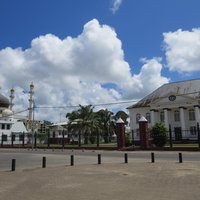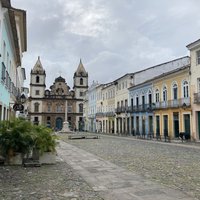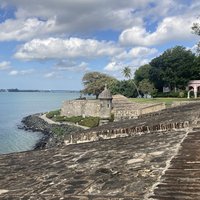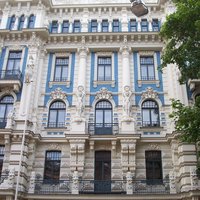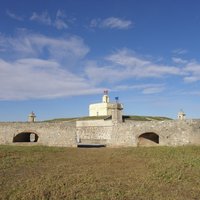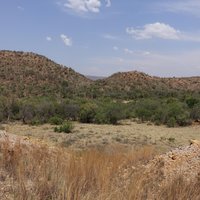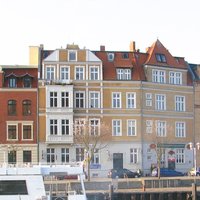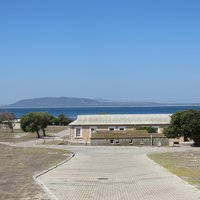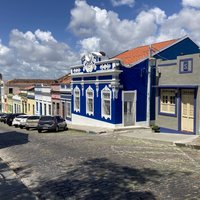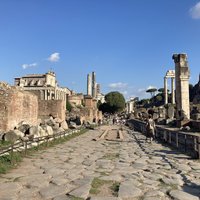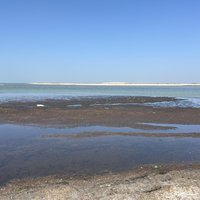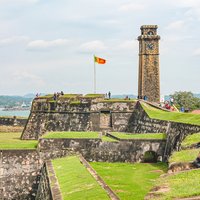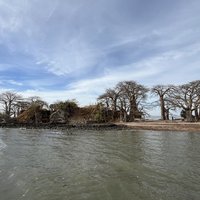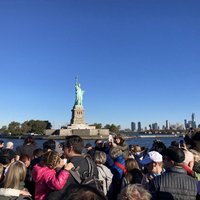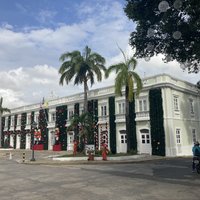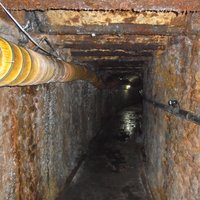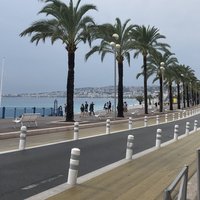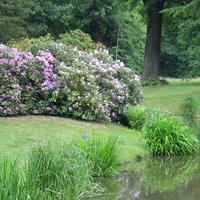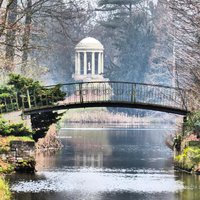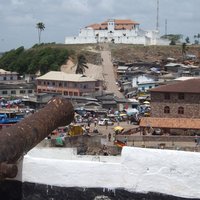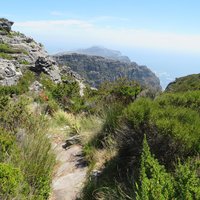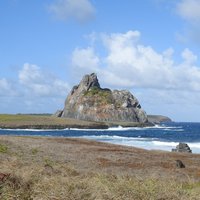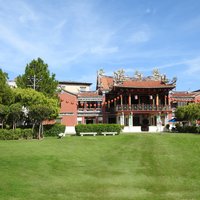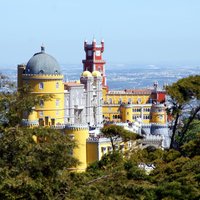Connected Sites
-
Dutch colonial public buildings, such as Fort Zeelandia (1667), the Presidential Palace (1730), the Ministry of Finance (1841), the Reformed Church (1837), and the Roman Catholic Cathedral (1885)
-
Dutch owned from 10 May 1624 - 30 Apr. 1625
-
Dutch owned from Sep. 1625 - 2 Nov. 1625 abandoned. The Dutch occupied only the town and the fort of Canuela in the bay entrance. The fort of Canuela is retaken by the Spanish after three weeks.
-
Von Dannenstern House at 21 Marstalu iela in the Old Town, which was built by the Dutch merchant of the same name who owned a wine shop in Riga.
See www.riga.lv
-
The fortifications were designed by the Dutch Jesuit Cosmander, based on the treatise of fortification engineer Samuel Marolois, whose work together with that of Simon Stevin and Adam Fritach launched the Dutch school of fortification worldwide. (AB ev)
-
Dutch settlers arrived at 1836 and established large farms
-
The Wasserkunst in Wismar was designed by the Dutch architect Philipp Brandin.
-
Via the Dutch East India Company "In 1652 Jan Van Riebeeck, working for the Dutch East India Company, saw in the island an important refueling site on the trading route between Western Europe and India. Sailors began to stop on the island in order hunt seals for fresh meat and to trade with locals for cattle and sheep. This refreshment of supplies was important in order to avoid such deadly diseases as scurvy and dysentery. Throughout the 1650's and 60's the island became more and more popular. Dutch sailors began to colonize the island, mining stone for buildings and lighting warning fires at night in order to keep boats from running ashore on the islands rocky coast. settlers. " Until 1795.
-
In 1630, the Dutch invade Olinda and dominate Pernambuco. The dominance lasted from 1630 to 1654.
-
Santa Maria dell'Anima: The church found its origin in 1350, when Johannes (Jan) and Katharina Peters of Dordrecht bought three houses and turned it into a private hospice for pilgrims, at the occasion of the Jubilee of 1350 (wiki)
-
Arguin Island (part of the WHS) was captured from Portugal by the Dutch 1633-78 (apart from a brief recapture by England in 1665). And then again -this time taken from the French in 1722-4
-
Fortress, city walls, protestant church
-
The Dutch briefly held the fort from 1659 until the British captured it in 1661.
-
Liberty Island, formerly called Bedloe's Island after its first Dutch owner Isaac Bedloo
-
The Dutch captured it from Portugal in 1641 and stayed until 1645.
-
In 1898, coal mining at Soengai Doerian was the biggest mining project operated by the Netherlands colonial government. (AB ev)
-
The Villa Il Paradiso was built for the Dutch baron Étienne van Zuylen van Nyevelt van de Haar. The Van Zuylen family owned the villa until 1942. (Nomination file, p. 146)
See fr.wikipedia.org
-
Prince Frederick of the Netherlands, Prince of Orange-Nassau, bought it in 1846
-
Oranienbaum: The former settlement of Nischwitz was renamed in 1673 after Countess Henriette Catherine of Nassau, a scion of the House of Orange-Nassau (Dutch: Oranje-Nassau) and princess consort of the then ruling Prince John George II of Anhalt-Dessau. From 1683 on she had the Oranienbaum Palace erected according to plans by the Dutch architect Cornelis Ryckwaert. (wiki)
-
Elmina Castle, English Fort (Fort Vrendenburg), Komenda Fort Amsterdam, Abandze Fort Patience (Fort Leysaemhyt), Apam Fort Good Hope (Fort Goedehoop), Senya Beraku Fort St. Jago (Fort Conraadsburg), Elmina, Fort Batenstein, (Butre) -converted to a fort from a Swedish settlement by the Dutch
-
The whole area, including for example Kirstenbosch National Botanical Garden "In 1660 a hedge of wild almond (Brabejum stellatifolium) and brambles was planted to form the boundary of the (Dutch) colony. Sections of this hedge, known as van Riebeeck's hedge, still exist in Kirstenbosch"
-
Fernando de Noronha - In 1628, it was occupied by the Dutch, who were displaced two years later by a Spanish-Portuguese military expedition. The Dutch occupied the island once again in 1635, making it a hospital for their troops who occupied Northeastern Brazil. It would remain under Dutch control for nearly twenty years, when it was reconquered by Portugal.
-
Melaka - a new fortress on St. John's Hill, converted the former Governor's residence into the Stadthuis, catholic St. Peter's Church, protestant Christ Church
-
1588 - The Dutch chose the island of Gorée to be one of their slave ports. 1659 - The French established themselves on the Island of San Luis, at the mouth of the Senegal River. 1677 - The French seized Gorée. A year later the Treaty of Nijmegen confirmed the conquest.
-
The Seteais Palace was built between 1783 and 1787 for the Dutch consul Daniel Gildemeester (wiki)

